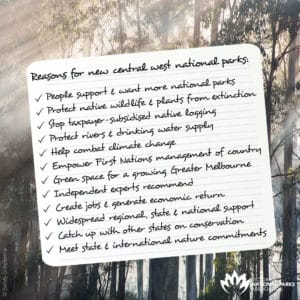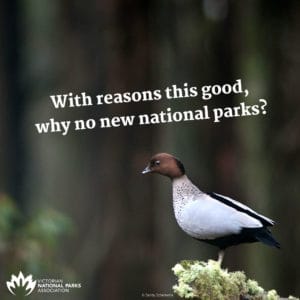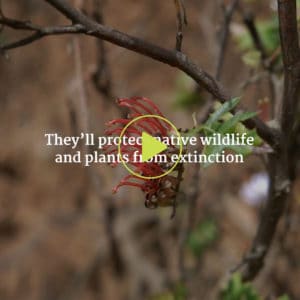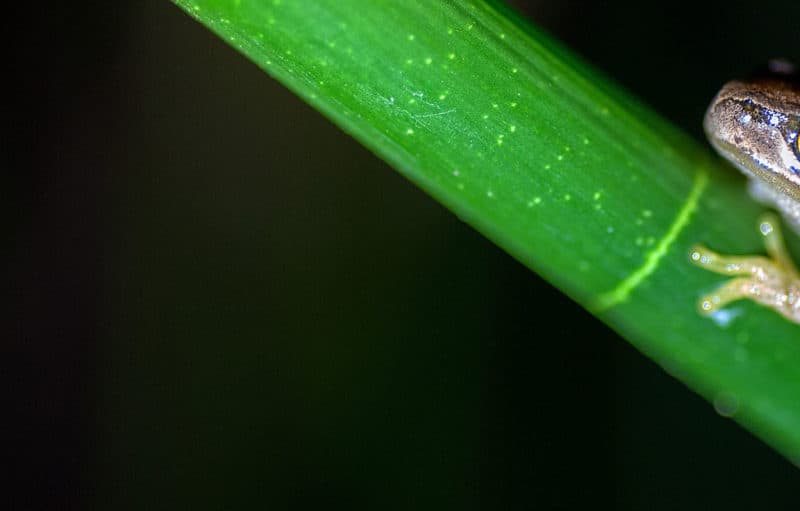TAKE ACTION |
The forests of the central west remain unprotected.
On 21 June 2019, the Andrews Government was handed an expert report recommending the protection of 60,000 hectares of public land in new national parks and reserves in Victoria’s central west.
But our state government has stalled on its legislative and moral duty, delivering nothing but a long list of excuses.
After two years it’s unclear why the Andrews Government can’t make the decision to protect these incredible natural places.
What are we going to do about it?
 Twitter: Fill their feed with good reasons
Twitter: Fill their feed with good reasons
It’s time that the Andrews Government delivered new national parks, for all Victorians and Victorian native wildlife.
From benefits to First Nations communities to helping combat climate change – there are so many reasons to create these new national parks.
They’re listening – let’s give them the long list of reasons.
 Instagram: Add your reasons to the list
Instagram: Add your reasons to the list
If the Premier & Environment Minister make a decision to accept the expert recommendations for these new national parks we can combat extinction & protect wildlife.
Let’s pull our weight in the ecological & climate crisis!
Add to the list of reasons to #createnewparks in the central west
After two years habitats are still being logged, and mining explorations approved. It’s not good enough.
While the government’s list of excuses grows, the list of reasons to create these much needed parks grows even longer.
With so many good reasons to, why no new national parks? Let’s ask them.
The list of reasons for new national parks in the central west:
- People want and support national parks – An opinion poll of 1,009 Melburnians over the age of 18, in Oct 2020 found: Four in five (81%) Melburnians support the proposals to expand national parks in Victoria around Daylesford, Woodend, Bendigo and Ballarat and COVID lockdowns hand made them more interested in visiting natural areas.
- Combat the extinction crisis and protect wildlife – New parks would support over 370 threatened species and high conservation habitats – including a recently spotted populations of Powerful Owls, the endemic and critically endangered Mt Cole Grevillea, and a stronghold population of Greater Gliders.
- End unpopular taxpayer–subsidised native logging – Logging of native forest is a massive burden on the Victorian tax payers, with state-owned logging agency VicForests posting a $20 million loss over the last four financial years. Logging in the west of the state is specifically subsidised with government grants. It’s time to open these biodiverse forests and woodlands to the public, instead of logging them at a loss – both to threatened wildlife and the Victorian taxpayer.
- Protects rivers and water supply – New national parks will protect significant headwaters of important rivers, including the Moorabool, Werribee, Lerderderg, Maribyrnong, and Wimmera rivers, that supply drinking water to many parts of regional Victoria.
- Helps combat climate change – The forests and woodlands of central west Victoria are carbon rich with protected parks estimated at between worth $450 million and $600 million when applying the current market price for carbon.
- Empower First Nations management of Country – Many of the new national parks would be co–managed through joint management between Traditional Owners and government.
- Green space for a growing Greater Melbourne – Within 90 minutes’ drive from Melbourne and the growing western and northern suburbs, new parks are spaces for the community to be protected and shared for the future. Free and easy access to green natural space has shown itself to be an issue over the COVID lockdowns.
- Expert and independent recommended – The independent statutory authority, the Victorian Environmental Assessment Council’s (VEAC) final Central West Investigation report was released 21 June 2019. It recommended the permanent protection of around 60,000 hectares of native forests, including the Wombat Forest (near Daylesford), Wellsford Forest (near Bendigo), Pyrenees Ranges Forest (near Avoca), and Mount Cole Forest (west of Ballarat, near Beaufort). After it was tabled in Victorian Parliament on 15 August 2019, the government had six months to respond. This response date was before the COVID–19 outbreak in Australia. The entire process has been running for more than four years, with 3000 community submissions, a series of major reports and over 450 pages of documentation.
- The economics stack up – An independent economic assessment by the Sayers Advisory Group of new central west parks released in February 2021, shows investing in new national parks for Victoria’s central west will return between four times to double the economic return on investment.
- Widespread regional, state and national support – A mighty collaboration of over 45 groups used a series of full page ads in six papers across key regional centres (Ararat, Bendigo, Ballarat, Castlemaine, Moorabool, Daylesford, Macedon) to call on the Andrews Government to hurry up and get on with creating and implementing new parks for Victoria.
- Victoria would catch up to other states – The G7 are pushing for more protected areas globally, and Victoria is lagging other Australian states. NSW recently bought 60,000 hectares of private land for new national parks. The Western Australia ALP Government in 2019 announced that it would create five million hectares of new national parks across their state.
- Meets Victorian & international conservation commitments – New parks in the central west will protect some important habitat types currently under-represented in Victoria’s protected reserve system, help deliver key elements of Victoria’s Biodiversity 2037 strategy and meet international targets. This would once again make Victoria a national leader in nature conservation.
Enshrining these forests as national parks would not only provide clean air and water, protect vital habitat for over 370 rare and threatened animals and plants, it would support joint management with Traditional Owners, and increase and enhance nature-based tourism and regional visitation.
More information (and reasons):
Image © Sandy Scheltema



